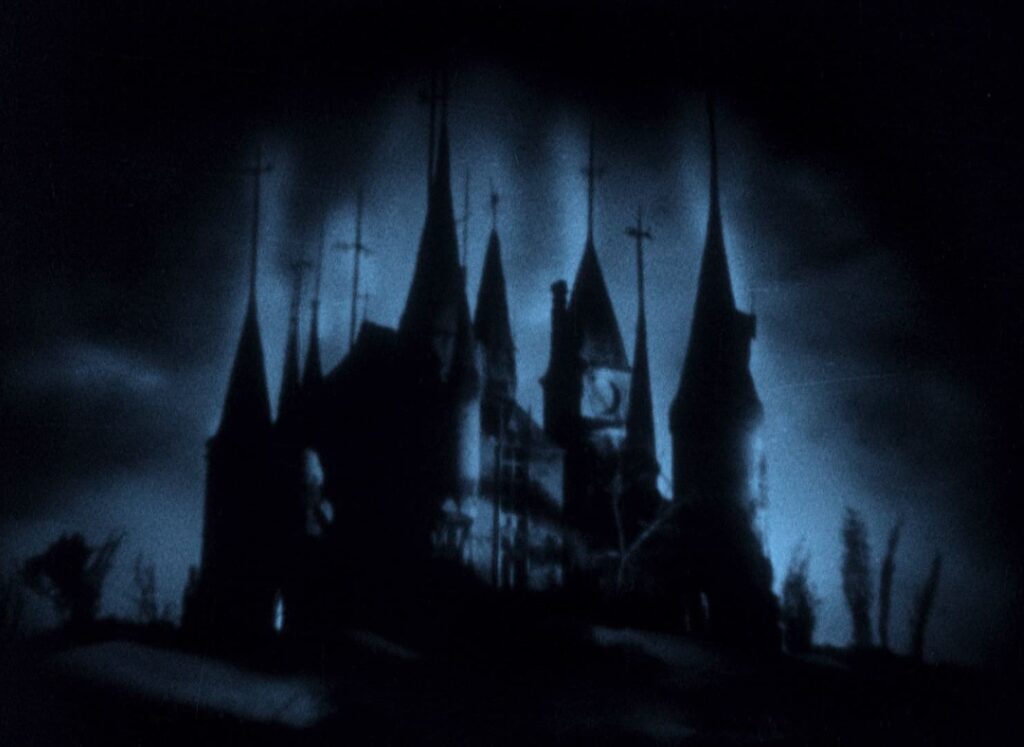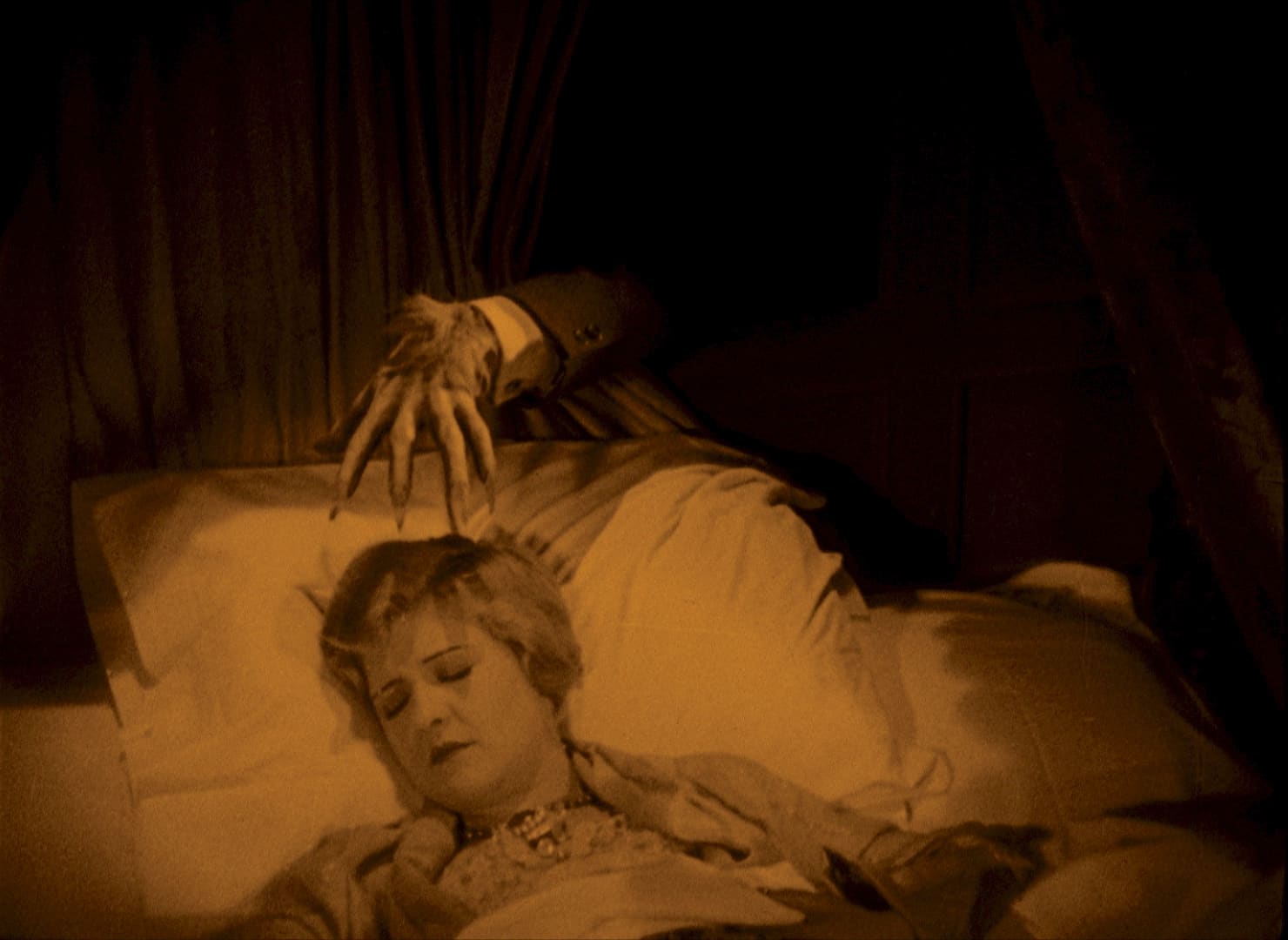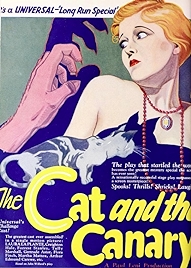The director Paul Leni died just as the talkies were coming in, but even so his name still has clout 100+ years on. 1927’s The Cat and the Canary reminds us why. It’s not only a cracking whodunit, and a demonstration of technical wizardry but is also a masterpiece of gothic expressionism… done only semi-seriously. Leni later directed The Man Who Laughs and he’s also having a lot of fun here.
The plot is so familiar Agatha Christie might have written it – a group of people gather in a spooky old house to hear the reading of the will of a relative who died 20 years before. This will make one of the party very rich and another one, they don’t know this yet, very dead.
It divides up in the familiar way – one third of getting to know people, one third circling around them until the victim is chosen, one third nailing the killer. Talking of which, who done it? One of the gathered ensemble of graceless relatives? The ghost of the man himself? Or even, possibly, a deranged lunatic who is said to be roaming the area?
Universal boss Carl Laemmle had seen Leni’s magisterial Waxworks and fancied having a bit of that German Expressionist vibe in one of his films. So he got Leni over to Hollywood and set him to work, incidentally setting Universal off on the path towards Dracula, Frankenstein, The Mummy and the monster movies of the 1930s and 1940s as well as creating the Old Dark House genre that’s still alive and kicking.

What Laemmle saw in Leni is obvious from the film’s opening moments, which are monstrously gothic and feature technically complex layers of super-imposed images. The rich old man is surrounded by gigantic medicine bottles and is being tormented by huge cats, who eventually monster him out of this life in the way a cat might dispatch a canary.
The display of technical virtuosity never lets up – mobile cameras, remarkable close-ups, light used to concentrate focus and deliver drama – and it’s miles ahead of what anyone else was doing. Many film-makers at this point were still shooting movies as if they were plays – fixed camera, static actors – but Leni is remarkably fluid and is also using smart, fast editing to complement in-camera effects. The moment when the will is read, for example, and avaricious Aunt Susan realises who’s going to inherit, Leni causes her head to elongate dramatically using, I’m guessing, a distorting mirror.
Later, when the old man’s portrait falls from the wall, Leni gives us an unusual picture’s-eye-view of the fall, suggesting the old man’s ghost might be involved. As the lawyer stares at the wax-sealed documents to work out if they’ve been tampered with, Leni’s camera rushes up to have a look too.
Leni is also clearly trying to stuff this story with as many entertainment genres as he can. It is a crime thriller but there is also horror – the deranged lunatic – madness, the suggestion of a romance between two of the company, towards the end he even throws in a car chase.
All that said, technically and in terms of genre exploration, Leni’s finest work comes up front. As the film wears on the demands of the whodunit start to exert themselves and Leni eases off a bit with the visual innovation, the comedy and the potential romance.
It’s a good cast, and though there are a few bland males in there Creighton Hale stands out as the sappy Paul, the bumbling male would-be hero. Generally speaking it’s the women who get the best of it – Laura La Plante as hot heroine Annabelle, Flora Finch as grasping Aunt Susan and the particularly funny Martha Mattox as Mammy Pleasant, the aged servant who knows where all the bodies are buried and whose face is a running commentary on the antics of all the others.
I suspect that even haters of old silent movies would enjoy this big old beast, because it’s so dynamically made and looks so good. If you’re thinking of diving in, there are a few good ones out there. I watched the 2004 Film Preservation Associates version and it was good – scratchy, blurry now and again, but with the original tinting restored. Easily good enough to make the film watchable.
There is another one on the way – the Eureka Masters of Cinema version, a 1080p 4K restoration, and on the evidence of the YouTube trailer it’s the one to go for. Clean, sharp, the scratches all gone, it’s been restored to full vigour. Eureka are consistently good at restorations of old gems and this would appear to be another excellent addition to the catalogue. It’s what I’m linking to below.
The Cat and the Canary – Watch it/buy it at Amazon
I am an Amazon affiliate
© Steve Morrissey 2024

